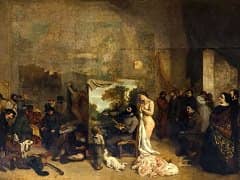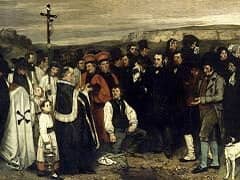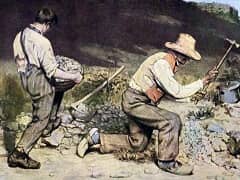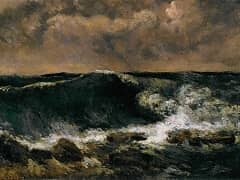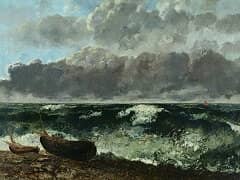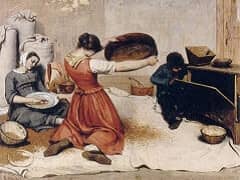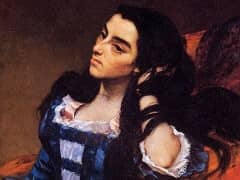The Young Ladies on the Banks of the Seine, 1856 by Gustave Courbet
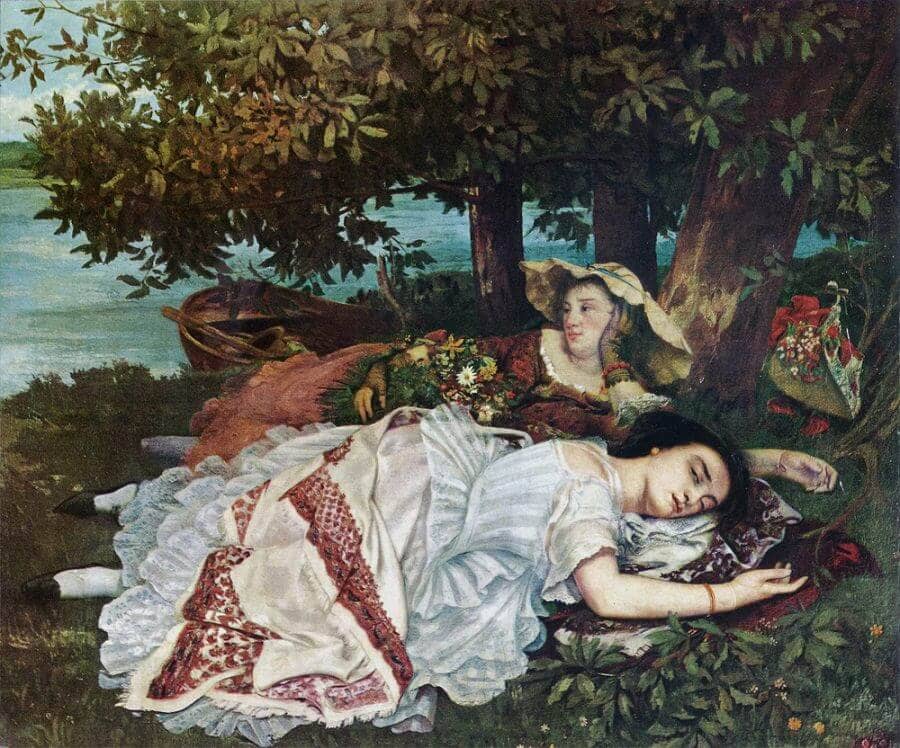
Without doubt one of the most delicious of Courbet's paintings, The Young Ladies on the Banks of the Seine is rightly much admired in our own day. The painting of the fabrics alone is a tour de force: the subtly variegated tones of white, the texture of the creamy cashmere shawl in relation to that of the thin lacy muslin, the handling of the decorative patterns, the pale pink ribbon... and then there are the flowers, the carpet of tiny wild flowers and grasses painted with the delicacy of a Pisanello, the lush bouquet on the lap of the further figure, the rich mixture of flowers and ribbon on the hat that lies abandoned by the tree.
Any viewer capable of enjoying the pleasures of painting will be drawn into this one and will succumb as well to its atmosphere of somnolent sensuality. Before we know anything further about this work, we know two things immediately: the artist is a magnificent painter and no puritan. The figure in the foreground, she of the satisfied, seductive gaze, is clearly dressed in her underclothing, however prettily charming it may be. The skintight pale yellow short gloves on her relaxed and curiously delicate hands virtually beg to be slowly peeled off. Her companion appears to be both more complaisant and less interested, which generates another level of erotic charge. The moored boat containing a man's hat signifies the temporary - soon to be renewed? - presence of the male. Courbet, as a lover of women, must have delighted in this painting, but he must have suspected too that it would cause an outcry at the Salon. The very use of the term Demoiselles in the title again was a deliberate provocation; these women are as far from being proper young ladies, though in a different direction, as were Courbet's sisters on their Sunday walk. By using the honorific Courbet was not putting down either set of women; on the contrary, he was attacking the rigidities of class and asserting the validity of such different kinds of actual working women as subjects for serious painting. This alone would - and did - cause annoyance, but the more serious disturbance came from the presence of such open sexuality represented in such pointedly contemporary terms. For the Salon public, sexuality could be safely encoded in nudity, such as the polished nudity of Venuses and Dianas and allegorical or exotic figures; it could not be presented in terms of social truths close to home. Thus this painting, with all its richness of cloth and decoration, flowers and foliage, and its scarcity of bare flesh was perceived as more sexually disturbing than the nudes of conventional art. That young working women in Paris - often recent arrivals from country villages - made themselves available to gentlemen who could pay for the pleasures of a Sunday along the Seine outside the city was not a truth to be openly acknowledged in polite society, still less to be embodied in a work of art with a serious claim to public attention. Only a few years later, the equally frank but more urbane sexuality of Dejeuner sur l'Herbe of Edouard Manet would be greeted with similar fierce denial.


